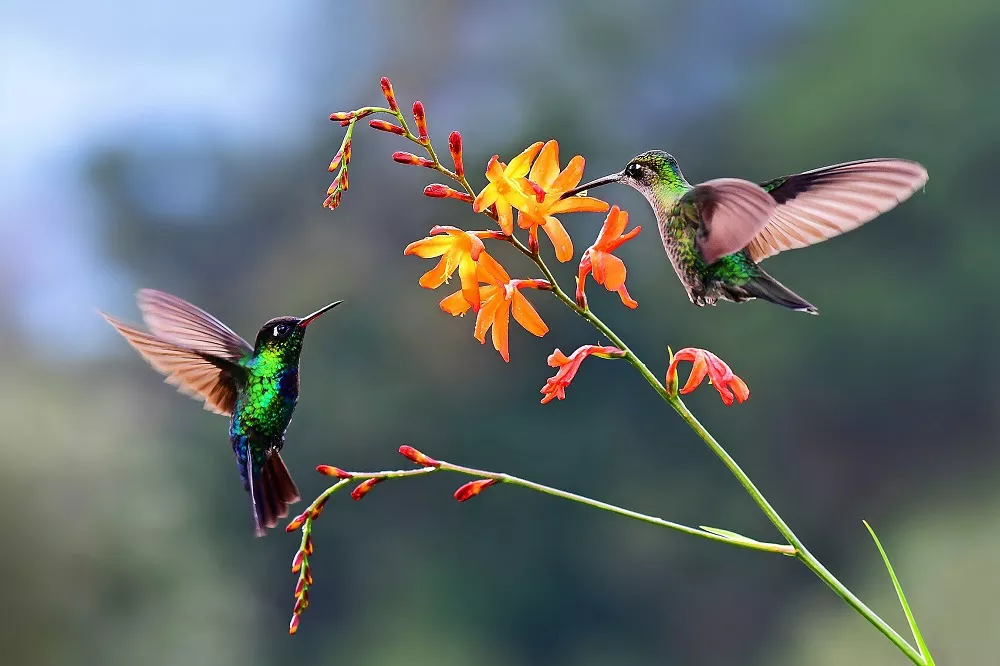Hummingbirds are beautiful and fascinating creatures that have captured the hearts of bird lovers around the world. These tiny birds are known for their unique ability to hover in mid-air, their vibrant colors, and their rapid wingbeats. However, despite their beauty, hummingbirds have a number of natural enemies that threaten their survival. In this article, we will discuss some of the most common natural enemies of hummingbirds and what can be done to protect them.
Predatory Birds
One of the most significant natural enemies of hummingbirds are predatory birds. Hawks, falcons, and owls are known to prey on hummingbirds, using their keen eyesight and speed to catch them in mid-air. In addition to these larger birds of prey, some smaller bird species such as shrikes, jays, and magpies may also attack hummingbirds.
To protect hummingbirds from predatory birds, it is important to provide them with a safe environment. This can be achieved by placing hummingbird feeders and plants in areas that are sheltered from potential predators. Hanging feeders and plants from high branches or in locations that are difficult for birds of prey to access can also help to deter them.
Snakes
Another natural enemy of hummingbirds are snakes. Snakes are attracted to the same nectar that hummingbirds feed on, and may attempt to steal the nectar or even attack the birds themselves. Species of snakes that are known to prey on hummingbirds include rat snakes, king snakes, and coachwhips.
To protect hummingbirds from snakes, it is important to keep the area around feeders and plants clear of brush and debris. This will make it more difficult for snakes to hide and ambush the birds. Placing metal or plastic mesh around the base of feeders and plants can also help to prevent snakes from climbing up and reaching the nectar.
Praying Mantis
Praying mantises are another natural enemy of hummingbirds. These insects are known for their ambush hunting tactics, using their powerful front legs to grab and hold prey. While praying mantises generally feed on insects, they have been known to capture and eat hummingbirds on occasion.
To protect hummingbirds from praying mantises, it is important to keep the area around feeders and plants clear of insects. Pruning back any overgrown vegetation can also help to reduce the number of insects in the area. Placing a small mesh screen over the feeder or plant can also help to prevent mantises from reaching the birds.
Domestic Cats
Domestic cats are also a significant threat to hummingbirds. Cats are natural hunters and are attracted to the movement and sounds of birds. Even indoor cats can pose a threat to hummingbirds, as they may try to catch them through windows or doors.
To protect hummingbirds from cats, it is important to keep them out of the area around feeders and plants. Placing the feeders and plants in locations that are difficult for cats to access, such as on high poles or in enclosed areas, can also help to reduce the risk of predation.
Insect Predators:
While hummingbirds primarily consume nectar, they also feed on small insects, such as mosquitoes and gnats, for essential proteins. Ironically, some of these insects become predators themselves, targeting hummingbirds for their sizeable meals. Insect predators, including spiders, dragonflies, and large wasps, may ambush hummingbirds while they feed on flowers or hover near insect-rich environments. These predators capitalize on the hummingbird’s vulnerability during feeding to strike swiftly.
How Hummingbirds Survive
Despite the many predators that threaten them, hummingbirds have several survival strategies that help them evade capture. Here are some examples:
Flight Skills: Hummingbirds are incredibly agile fliers that can change direction quickly and fly backwards. This allows them to dodge predators and escape danger.
Camouflage: Some species of hummingbirds have evolved to blend in with their surroundings, making them difficult for predators to spot.
Nesting Habits: Hummingbirds build their nests in hard-to-reach places, such as high up in trees or on the undersides of leaves. This makes it more difficult for predators to access their nests.
Grouping: Some species of hummingbirds will form large groups to feed. This reduces the risk of any one individual being singled out by a predator.
Hummingbirds are unique and beautiful creatures that are loved by many. However, they face a number of natural enemies that threaten their survival. By taking steps to protect hummingbirds from predators such as birds of prey, snakes, praying mantises, and domestic cats, we can help to ensure that these amazing birds continue to thrive.
Related Topics:
- What plants attract hummingbirds
- Where do Hummingbirds sleep at night
- Do Hummingbirds eat bugs
- How long do Hummingbirds live
- World’s Smallest Hummingbird—The Bee Hummingbird


 Facebook
Facebook  Instagram
Instagram  Youtube
Youtube 